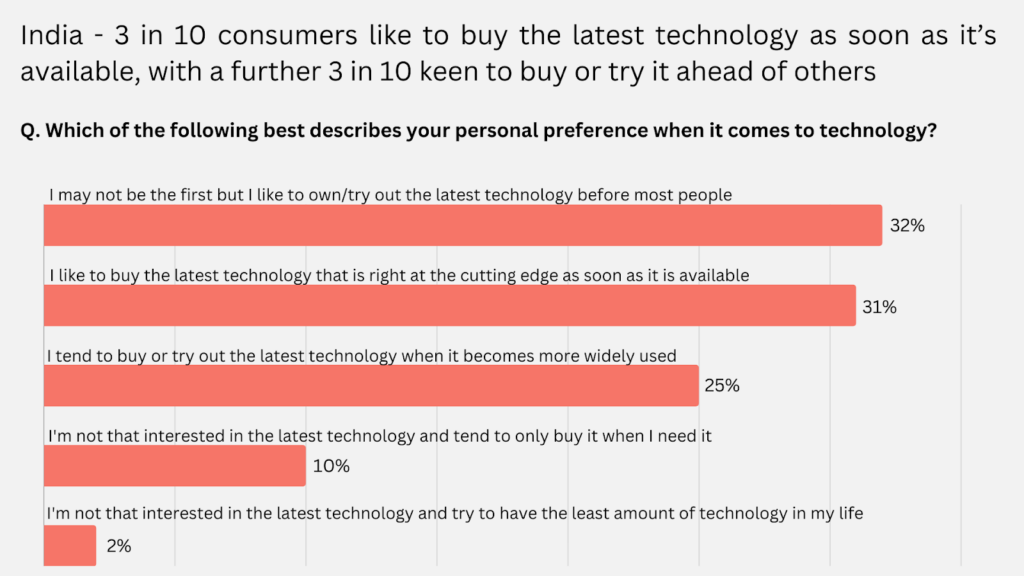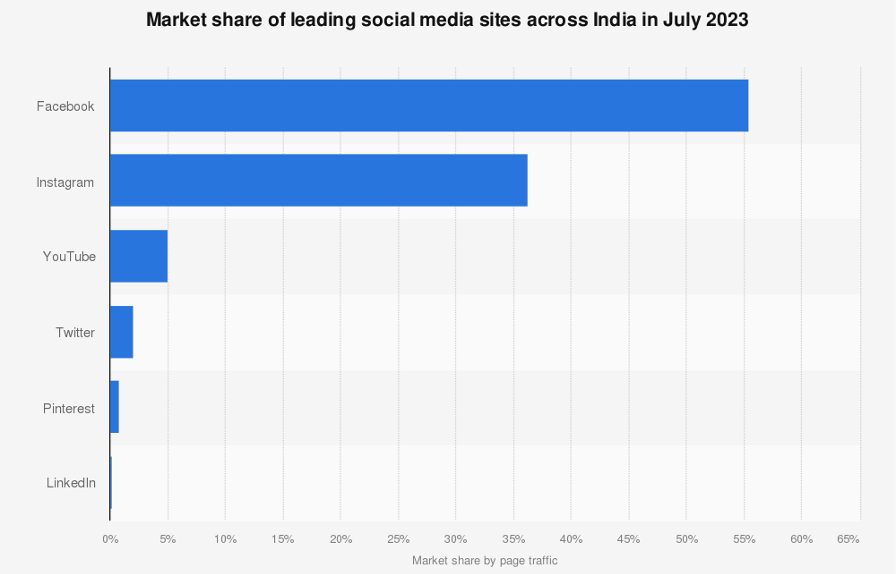Navigating India’s Multifaceted Market
The Indian Market stands out as a lively and attractive market in the rich fabric of global trade, presenting a range of opportunities and difficulties for multinational firms and stronger SMEs trying to establish a foothold. In recent years, India has emerged as a land of possibility for enterprises across industries. With a surging population of over 1.4 billion and a quickly growing economy. As the world’s fifth-largest economy by nominal GDP , the country’s macroeconomic landscape is compelling, marked by consistent GDP growth rates that have consistently outpaced global averages, growing from 468 billion USD$ in 2000 to 3.39 trillion USD$ in 2022.
Since the early 1990s, India’s economic liberalization policies have promoted a business-friendly climate. India attracted foreign direct investment, and contributed to industry diversification. The healthy consumer market, driven by a rising middle class and an increasingly urbanized population, adds to India’s economic attraction, positioning it as a crucial destination for foreign enterprises seeking development and expansion.
However, it is the complexities of this diversified country that necessitate a sophisticated knowledge for effective market penetration. This article delves into the nuanced facets that international organizations must navigate when going into the Indian market, from the regionalization and cultural diversity that shape consumer behavior to the critical considerations of market entry strategy, infrastructure challenges, and the ever-evolving technological landscape. Unveiling the intricacies and potential therein, this research intends to serve as a guide for organizations looking to not only enter but prosper in India’s dynamic and multidimensional market.
Navigating Regional Diversity
Regionalization in India is a tapestry woven with varied cultural, linguistic, and economic threads, resulting in a complex mosaic that has a considerable impact on business dynamics. Linguistic variety is a distinguishing trait, with main language-based areas centered on Hindi in the north and center, Tamil in the south, Bengali in the east, and Marathi in the west. Each linguistic region has its own set of cultural subtleties that influence consumer behavior and preferences.
Economically, India’s states have various specializations that contribute considerably to the country’s GDP. Maharashtra, located in Western India and home to Mumbai, the bustling financial hub, is a prominent economic actor with a concentration on banking, commerce, and industry. Karnataka and Tamil Nadu in southern India have emerged as technical powerhouses, with thriving IT sectors that contribute considerably to India’s economic growth. Bengaluru, Karnataka’s “Silicon Valley of India,” and Chennai, Tamil Nadu, are both important IT centers.
Moving north, Delhi, the capital territory, serves as an important economic and administrative center, hosting government institutions and functioning as a hub for many businesses. The eastern state of West Bengal, home to the vibrant metropolis of Kolkata, is a major hub for the economy, especially in industries like tea and jute production. There is also an increasing emphasis on services and information technology. Understanding these state-specific economic specializations is crucial for multinational businesses navigating the Indian market because it allows them to customize tactics that fit the various economic environments and cultural settings of each area. In India, companies can consider establishing a regional approach and treating each region with a specific approach and ressources.
Crafting a Strategic Entry
An approach that considers the distinct regional nuances and diverse customer landscape is crucial for your successful market entry strategy in India. Therefore, conducting market research and modifying products are essential for a successful launch of your product or service in each region in India. In order to properly design their products, international organizations need to perform detailed research to understand local consumer preferences and cultural subtleties. The introduction of McDonald’s into the Indian market is a prime example.
Understanding how important it is to adjust to local preferences, McDonald’s launched a selection of vegetarian options to satisfy the large number of vegetarians in India. An especially popular localized vegetarian option was the “McAloo Tikki” burger. In addition, McDonald’s changed its menu to include Indian-style foods such as the “Spicy Paneer Wrap.” This “localisation” showed a dedication to regionalized products as well as a deep awareness of the varied tastes of Indian consumers. McDonald’s effectively navigated the Indian market by incorporating regional flavors and preferences into their menu, underscoring the need of localizing and adapting products to build a strong presence.
Forming strategic alliances with regional companies is another common tactic that can help your organization. By taking advantage of local knowledge and successfully managing regulatory hurdles. A prime example is Starbucks‘ entry in the Indian market. Acknowledging the significance of comprehending regional consumer inclinations and maneuvering through cultural subtleties, Starbucks formed a strategic partnership with Tata Group, a reputable and well-established Indian corporation. Through this partnership, Starbucks was able to leverage Tata’s regional expertise to create a product line that appealed to Indian customers. As a result of the collaboration, Starbucks opened locations in several Indian cities. There, it skillfully combined its international appeal with a menu that catered to the local palate. Including products like the well-known “Tata Tazo” tea beverages. Starbucks successfully navigated the Indian market through this strategic relationship, demonstrating the effectiveness of partnership-based market entrance methods in promoting successful international brand integration.
Overcoming Infrastructure Hurdles
Infrastructure-related issues in India, especially with regard to transportation and logistics, present serious obstacles for companies looking to make a strong footprint. The nation has challenges related to clogged roads, insufficient transportation systems, and logistical bottlenecks. That hinders the efficient movement of products and services. These difficulties frequently cause supply chain management to become more complicated, expensive, and delayed.
Nevertheless, some multinational firms have been able to successfully overcome these challenges thanks to creative solutions and tactical adjustments that you can implement as well. Amazon, a massive online retailer, serves as an example. Given India’s infrastructure shortcomings, Amazon has made significant investments to expand its logistics and distribution system. In order to improve order fulfillment efficiency and streamline inventory management, they started by eliminating some of this pressure.
They did so by creating initiatives such as Easy Ship and Seller Flex. Easy Ship is a system wherein Amazon collects orders directly from sellers’ doorsteps and inputs them into the Fulfillment By Amazon channels saving the seller the difficulties of logistical roadblocks. Seller Flex allows sellers to centralize their entire inventory in their own warehouse while still showcasing their complete stock on Amazon.in. This offer minimizes operational expenses such as transportation, storage, and reverse logistics, the Fulfillment By Amazon service empowers sellers to efficiently and swiftly meet customer needs, enhancing overall performance.
To further manage the complexities of the Indian logistics scene, Amazon has embraced local alliances and creative last-mile delivery solutions. Examples of these include partnerships with local courier services like Delhivery, Gati and Blue Dart, as well as utilizing local merchants. Amazon has also gone further and has translated its platform into 7 Indian languages.
By taking proactive measures to resolve infrastructure issues, Amazon has improved its operational efficiency and established a model which your business can follow to succeed in the Indian market.
Lessons from Challenges
Walmart, the enormous American retailer, is one example of a company that had difficulty breaking into the Indian market. Even after opening wholesale cash-and-carry locations under the Best Price Modern Wholesale banner, an unexpected adaptation from an organization who is usually very standardized in their approach, Walmart faced substantial obstacles that forced it to reevaluate its approach. Its market penetration was hampered by fierce rivalry from well-established local competitors like Reliance and Bharti Enterprises because of their devoted client base and in-depth understanding of the Indian market. Walmart, which typically depends on its effective supply chain to maintain low pricing, experienced operational inefficiencies, and higher expenses as a result of the complexity of India’s disjointed supply network.
In order to address the obstacles Walmart faced by the Indian market, here are a number of tactical measures they could have undertaken. First, Walmart could have gained important market insights and lessened competition concerns by establishing strategic alliances with well-established local players. Secondly, it’s possible that operational efficiency and cost savings could have been achieved by refining the supply chain to address India’s particular difficulties, such as fragmented logistics. Finally, Walmart’s offering could have stood out in a very competitive market if it had taken a more customer-centric stance by providing value-added services and experiences. The intricate approach necessary for success in India necessitates a cautious balance between flexibility and a deep comprehension of the diverse and ever-changing consumer terrain.
Mastering the Digital Surge
India’s digital ecosystem has seen a revolutionary upsurge, driven primarily by e-commerce and digital marketing, which are influencing consumer behavior and corporate tactics. For instance, according to PwC study, whilst the global average is 2 out of 10, 3 out of 10 consumers in India show a strong desire to buy the newest technology as soon as it is released. In terms of pre-purchase information, India is also more e-commerce oriented as global consumers heavily rely on search engines and retailer websites whereas Indian consumers prioritize information from the largest e-commerce websites and search engines.

Through digital landscape adaptation, a few foreign organizations have effectively entered this rapidly expanding sector. For example, in addition to profiting from e-commerce growth, Amazon has deliberately used digital marketing initiatives such as promotions during festive seasons, exclusive product launches, and targeted advertising on digital platforms to reach a large number of customers. Similar to this, social media sites like Facebook and Instagram are now essential for foreign firms to engage with Indian customers and raise their profile as just these two platforms boast over 90% of the market share of social media sites.
Experts do not believe this domination will be short-lived as statista experts project a sustained growth in the significance of these platforms, with their estimates indicating an increase in Facebook’s user base from 496.98 million in 2023 to 970.61 million by 2040. The continuously changing digital landscape in India presents opportunities and difficulties for organizations looking to create a strong online presence in this vibrant market. This change has coincided with the growth of digital marketing, as businesses use influencer marketing, social media, and SEO to connect and interact with a wide and engaged audience.

An example of a digital marketing campaign executed by an international brand in India is the “Smile Deke Dekho” campaign delivered by PepsiCo for their brand Lay’s. “Smile Deke Dekho” translates to English, from Hindi, as “Try to Smile”. In October of 2019, Lay’s launched a unique and interactive digital marketing initiative to engage with consumers in India. The campaign started as one portraying the smiles of celebrities Alia Bhatt and Ranbir Kapoor, the ambassadors for the campaign, on their packaging.
However, the campaign evolved and Lay’s encouraged people to share their smiles by uploading selfies on the Lay’s website. These smiles, sourced from the public, were then featured on limited-edition Lay’s packaging. The idea was to turn ordinary chip packets into a canvas for a diverse array of smiles, creating a personal and emotional connection with consumers. The campaign leveraged social media platforms, encouraging users to share their smiles using the hashtag #SmileDekeDekho.
The response to the campaign was overwhelming, with people from all walks of life participating and sharing their joyous moments. This not only generated user-generated content but also turned Lay’s packaging into a dynamic, crowd-sourced gallery of smiles. To add to its virality, Lay’s launched, in December of 2019, a music video for the campaign which has garnered 127,8 million views on YouTube.
Lay’s success in the “Smile Deke Dekho” campaign in India highlights two crucial lessons which your organization can leverage. Firstly, the campaign’s evolution from featuring celebrity smiles to actively engaging consumers in sharing their own smiles demonstrates the power of user-generated content and personalization. Secondly, the strategic use of social media, particularly the hashtag #SmileDekeDekho, played a pivotal role in amplifying the campaign’s reach and impact. This showcases the importance of leveraging popular social media platforms for interactive and hashtag-driven campaigns, enhancing brand visibility and engagement. Overall, Lay’s demonstrated the effectiveness of combining user participation, personalization, and social media to create a highly successful and viral marketing initiative.*
Key Takeaway
In conclusion, India stands as a dynamic and promising market, beckoning organizations with a massive population and a rapidly growing economy. While challenges like regional diversity and infrastructure hurdles necessitate strategic adaptations, the long-term potential in India is compelling. The country’s expanding middle class, ongoing urbanization trends, and widespread embrace of technology underscore a landscape rich with opportunities for your organization.
Successful market entry strategies, exemplified by brands like McDonald’s and Starbucks, showcase the adaptability required for sustained success in a market which is difficult to penetrate. Transport and logistics pose infrastructure challenges, but successful solutions, like Amazon’s investment in logistics, showcase effective navigation. However, cases such as Walmart underscore the need for nuanced strategies, including partnerships, supply chain optimization, and customer-centric approaches, to overcome Indian market hurdles. As you navigate the intricate Indian market, understanding its complexities and leveraging its evolving dynamics will unlock substantial rewards, positioning your company not just to penetrate but to thrive in this diverse and dynamic market in the years to come.
Prime Target can accompany you in your international business project, with decades of experience and a far-reaching international physical network. Prime Target’s Market Ranking Report can help you evaluate the market potential of 5, 10 or 20 countries simultaneously, and identify new export markets with the highest potential. This comprehensive and personalized Market Ranking Report can minimize risk, saving time and money, as well as identify new business opportunities abroad.




